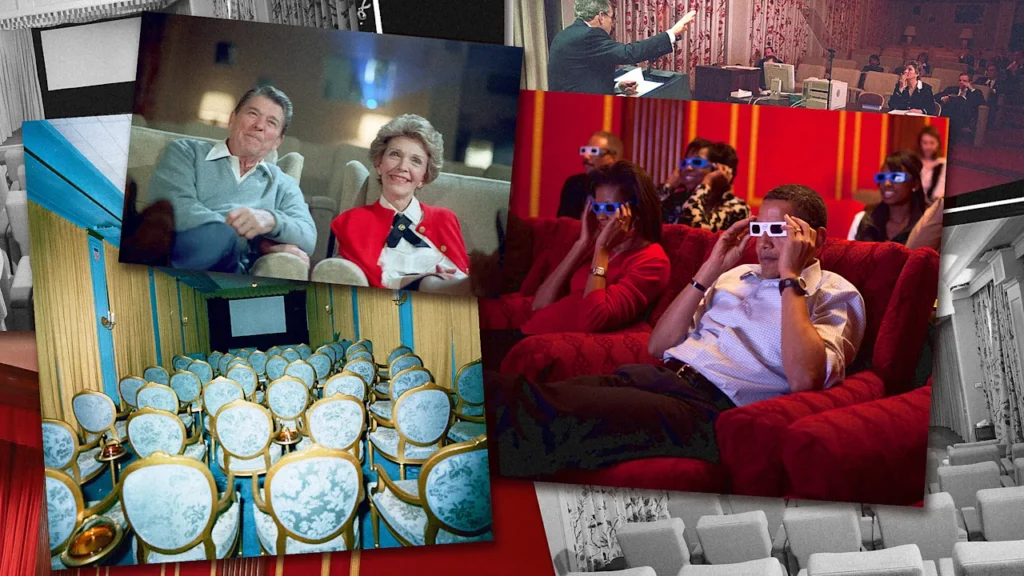
During his two terms from 1953 to 1961, President Dwight D. Eisenhower reportedly spent hours tucked away inside the teal-and-gold movie theater in the White House’s East Wing, watching more than 200 Western films. Years later, Bill Clinton used the theater—then decked out in a very ‘90s combination of red and tan—to view Schindler’s List and Naked Gun. Even President Trump himself used the theater, now with an art-deco-inspired red-and-gold look, for a screening of Finding Dory back in 2017.
Now, the historic landmark is just another part of the rubble that was once the East Wing.
Since its construction more than 80 years ago, the White House theater has served as a kind of miniature window into the real lives of U.S. presidents, offering the American people a rare glimpse into moments of rest and personal time. According to Matt Lambros, a photographer who’s spent years researching historic theaters and written three books on the topic, even the interior design of the theater itself—which was renovated multiple times over the years—gives fresh insights both into each president’s taste and the historical context of theater aesthetics more generally.
Now that the theater has been demolished by the Trump administration along with the rest of the East Wing, Lambros says a piece of theater history has been permanently lost. Here, we take a walk back through the theater’s various design eras.
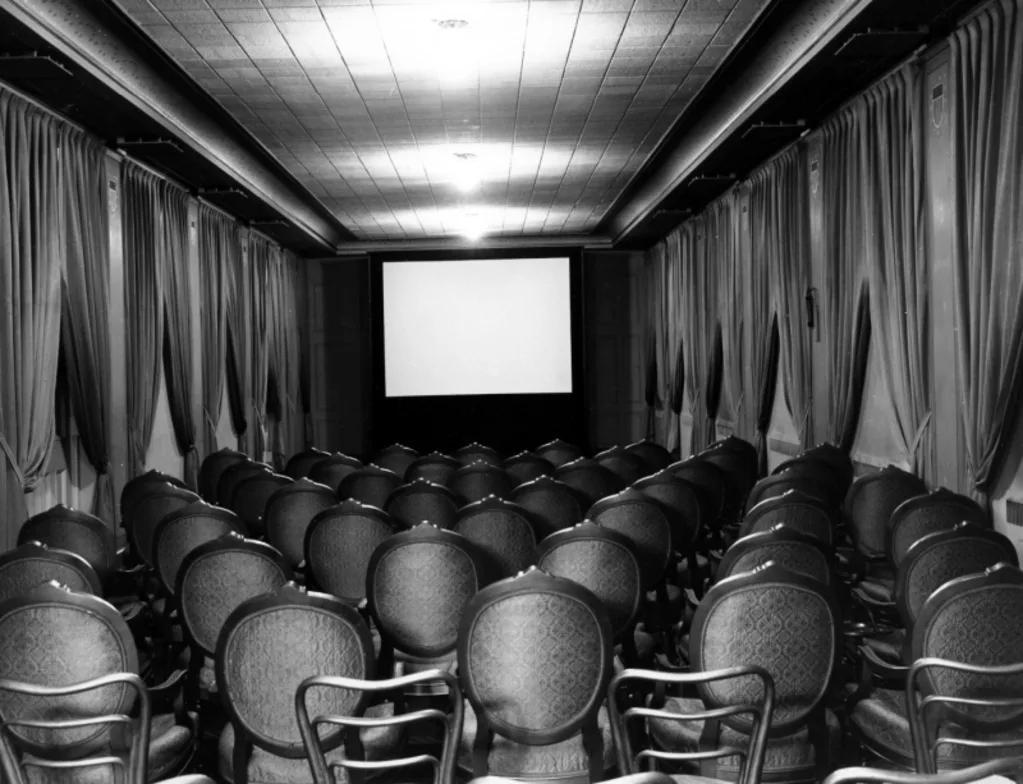
FDR converts the “Hat Box”
The White House theater, located in the building’s East Terrace, was created in 1942 when Franklin Roosevelt converted what was then a cloakroom, known colloquially as the “Hat Box,” into a viewing area. Given its history as essentially a glorified closet, the theater could seat just 40 guests.
The earliest photos of the theater are exclusively black-and-white, so it’s difficult to get a full picture of what the room looked like in person. Two details are clear, though: Unlike the movie theater seating of today, Roosevelt’s guests were sitting in small, wooden seats; and, along the walls, large curtains hung from the ceiling to the floor.
The curtains were likely added to block light from the domed windows that lined the original room, Lambros says. But, he notes, curtained walls were actually a trend in theaters around the time. As the stylized, ornate plasterwork and paneling inside historic theaters went out of style, the curtains became an easy way to modernize interiors.
“That is actually what happened in a lot of movie theaters across the country,” Lambros says. “You had these big ornate theaters, and instead of like, ‘Oh, let’s paint them a different color,’ during the fifties and sixties, they were like, ‘Let’s just put curtains up over it.’”
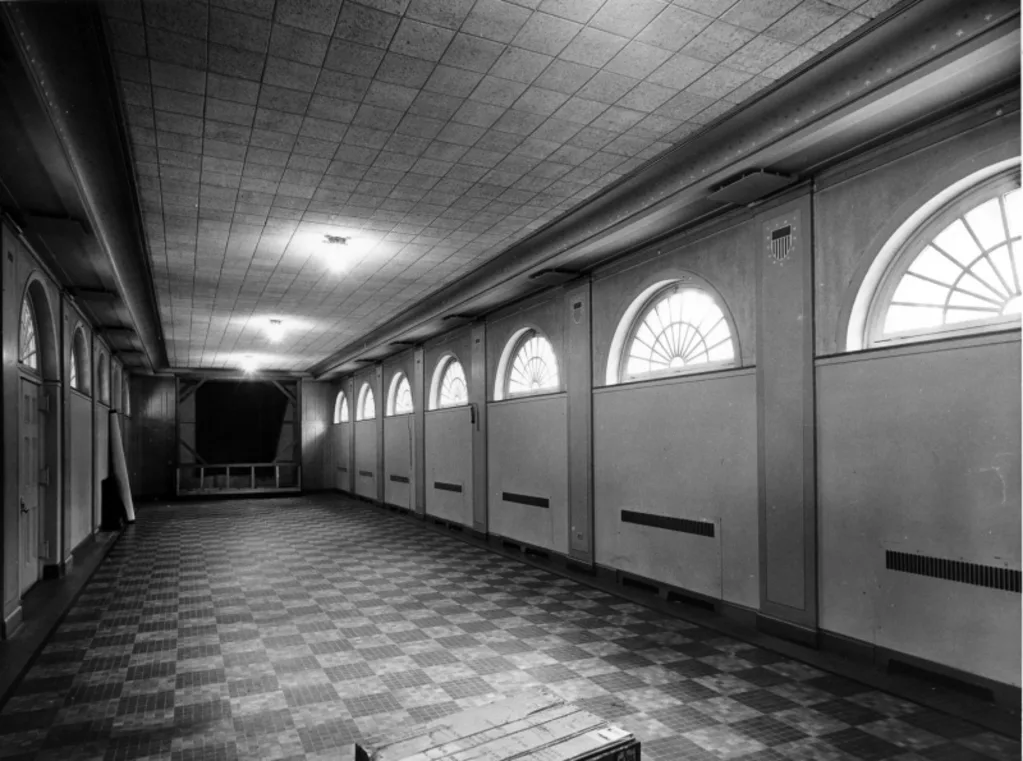
Truman’s rococo revival refresh
Harry Truman’s presidency appears to be the first time the theater was renovated. The old carpeting was removed, revealing tiled flooring; gold sconces with candlestick lighting were added to the walls; and a row of plush, wide chairs lined the front of the theater. The whole space used an almost rococo-esque palette of gold and blue, including gold curtains, which remained lining the walls.
This look would stay in place for several decades. According to logs kept by White House projectionist Paul Fisher, who held the post for seven different presidents, it was in this version of the room where Eisenhower watched Gary Cooper’s High Noon on repeat, and where John F. Kennedy viewed the film From Russia With Love the day before he was assassinated in 1963. This iteration of the theater also played host to hundreds of screenings held by Jimmy Carter, who watched more than 400 movies during his term—a presidential record.
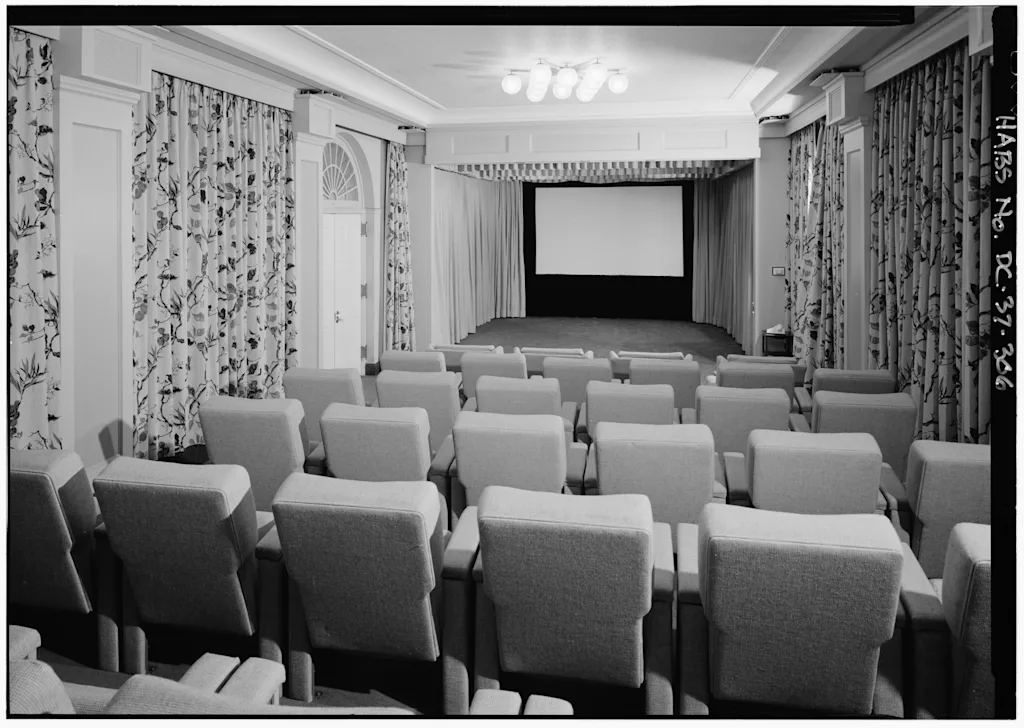
Clinton’s ’90s-era living room
In the early ’90s, the theater got a renovation that traded its former color scheme for a combination of orange carpet, tan seating, and red accented curtains. The total effect was something akin to a grandma’s living room.
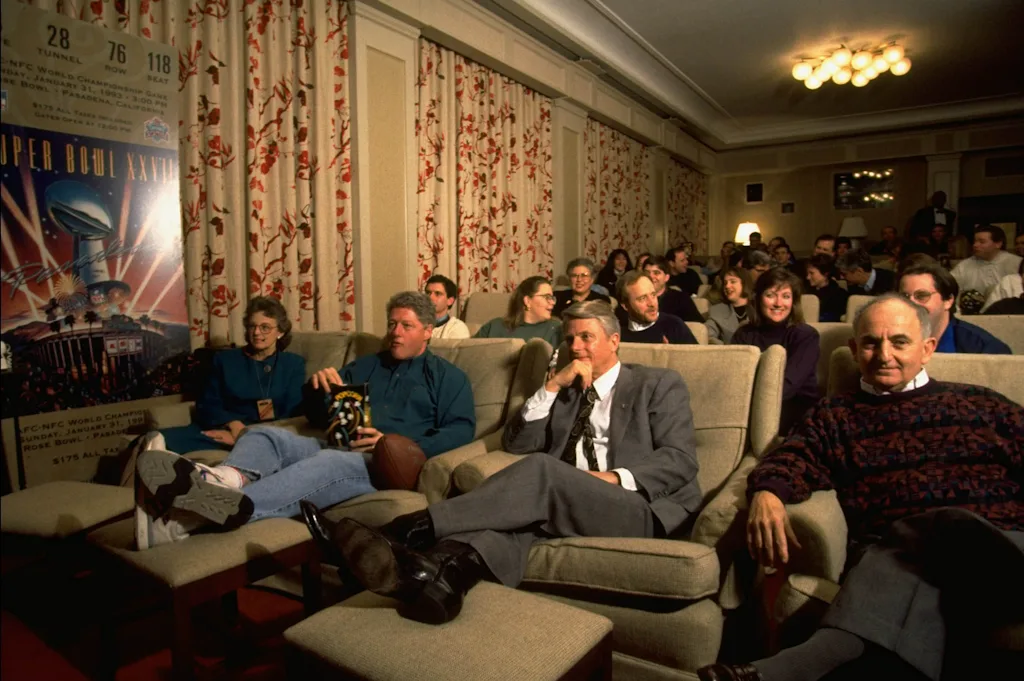
“It was really ugly,” Lambros says. “But that kind of humanizes it. That’s one thing I really like about the history of this theater, is that you really get insight into each president.”
Bush’s historic theater homage
The theater’s final renovation came courtesy of First Lady Laura Bush in the early 2000s, who used the opportunity to pay homage to historic theater aesthetics.
Her version of the screening room was completely decked out in red and gold, from the carpet to the chairs and walls. The curtains were finally removed and replaced with a repeated, golden art deco motif—similar to the kind of decorations that would’ve been covered up in local theaters throughout the mid-20th century.
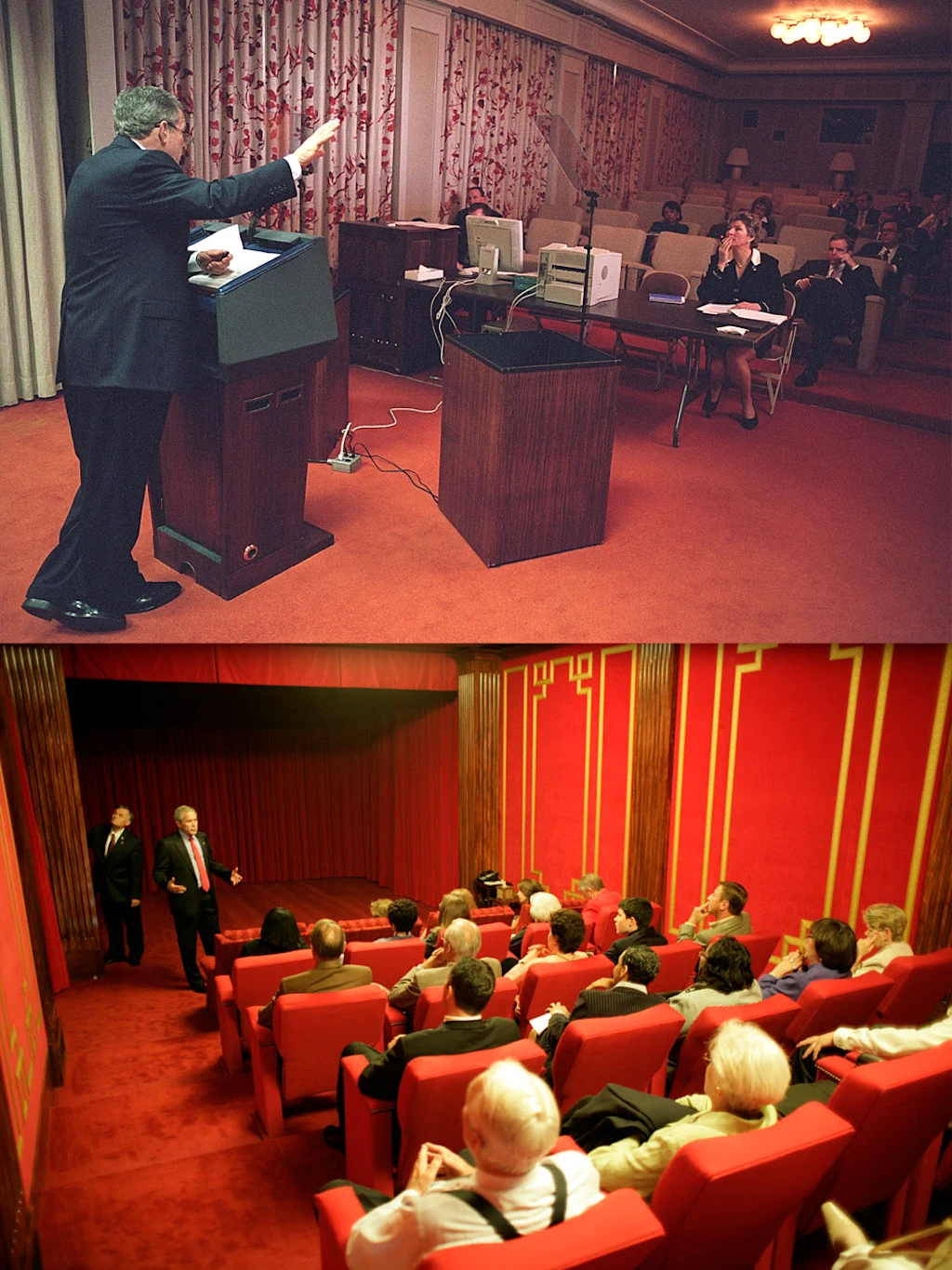
According to Lambros, the modern association of a red and gold palette with movie theaters actually traces all the way back to an interior designer named Anne Dornan, whose work in the 1920s helped establish theater design.
“She had very specific ideas of what certain color palettes should be used in certain theaters depending on their locations,” Lambros says. “She thought that major metropolitan downtown area theaters were reds and golds, and she came up with something called the Theater Decorator’s Color Chart.”
Laura Bush’s design nods to that history, he says, while adding “art-deco-style touches that weren’t there before, more in line with theaters like the Paramount in Oakland than the original design ever was.”
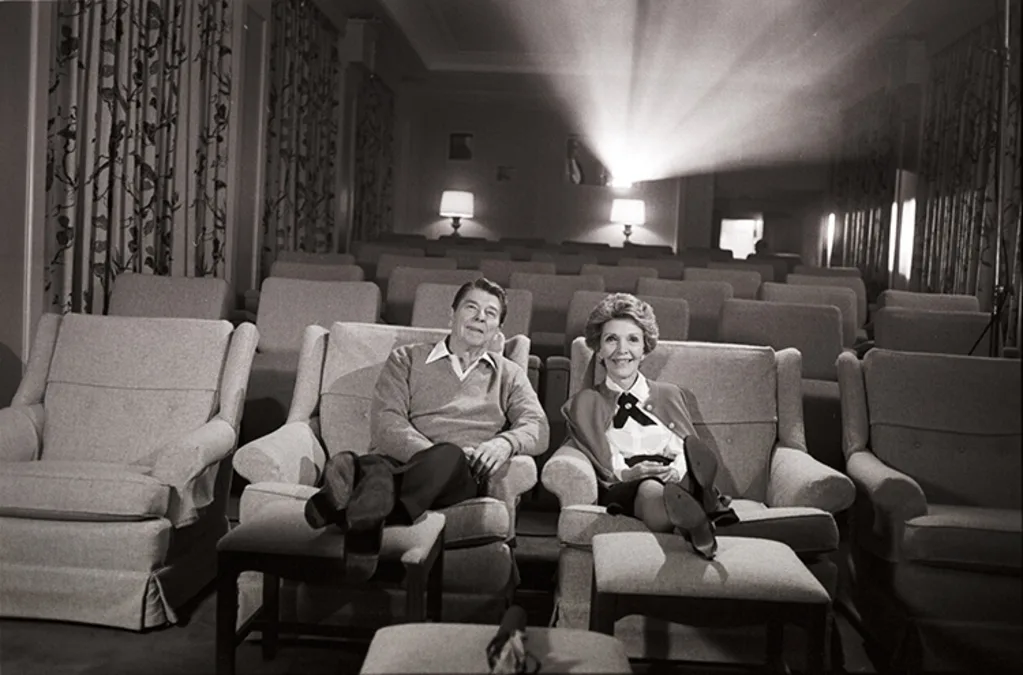
“A piece of history” no more
For Lambros, the White House theater was one of the reasons that he developed an early interest in historic theaters in general. As a kid, he remembers, he was fascinated by the idea that the president might be watching the same film as him from inside the White House.
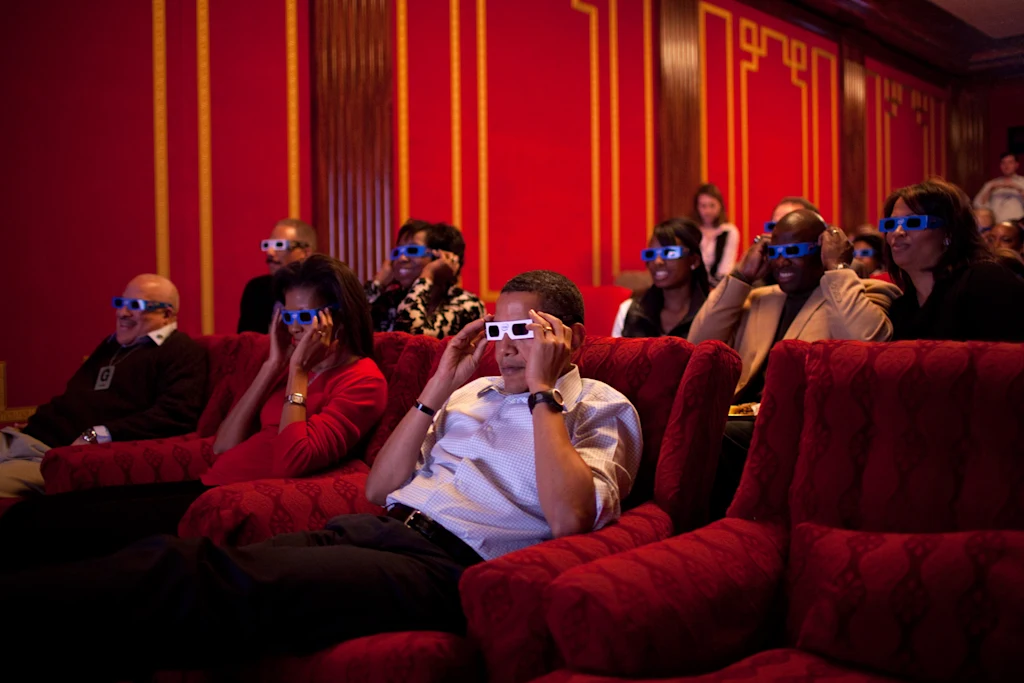
“It was a connection point between the president and the American people,” Lambros says. “There are photos of the presidents and their children and grandchildren sitting in the theater watching TV or watching movies, and we all can relate to that. It’s a piece of history that humanized the president, and it was erased.”

